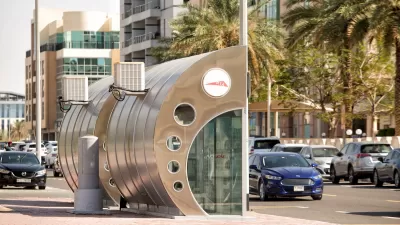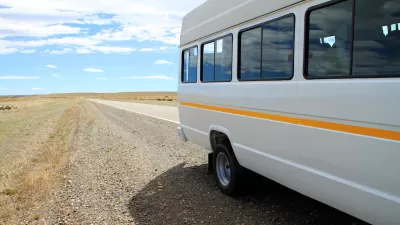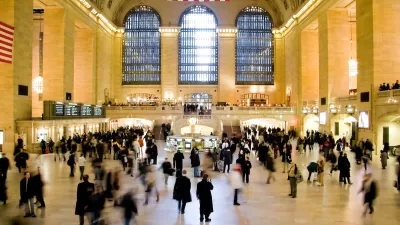In every phase of transit development, arts and culture strategies can be employed to inform and enhance the process. Here are examples from three different transit projects around the country.
First Stop: Arkansas—Springdale, Arkansas, is growing. Home to the world’s second largest meat processing corporation and a national freight and shipping company, the city has seen its population double over the past 20 years, according to the U.S. Census. The larger northwest Arkansas region—headquarters of Walmart—is also growing, putting the issues of vehicular traffic, access to jobs, and displacement at the top of some people’s minds.
One of those people is Erika Wilhite, a social practice artist and founder of Artist’s Laboratory Theater, a community-based, site-specific theater company in Northwest Arkansas. Wilhite and Antony Ramos, a digital storyteller, are the creative partners behind a series of art-inspired sessions, activities, and presentations that they hope will influence details of Connect Northwest Arkansas, a 10-year transit development plan that is currently in the proposal stage. The projects are part of their work as newly named Arts, Culture, and Transportation Fellows with Transportation for America, an initiative designed to give art professionals opportunities for hands-on learning about the transportation planning and design process in their respective regions. The 11 fellows, working in four cities, will also learn how to better integrate arts and culture practices into transportation projects.
In a region where some of the cities’ bus lines don’t run on weekends, and none that operate past 7 p.m., new thinking around transit is highly anticipated. “There are people [who] are transit-dependent in all of our cities, and the current system—with all of its different levels of effectiveness and accessibility, [is] still not enough,” says Wilhite.
. . .
FULL STORY: Integrating Arts and Culture Strategies into Transit Plans

Planetizen Federal Action Tracker
A weekly monitor of how Trump’s orders and actions are impacting planners and planning in America.

Maui's Vacation Rental Debate Turns Ugly
Verbal attacks, misinformation campaigns and fistfights plague a high-stakes debate to convert thousands of vacation rentals into long-term housing.

San Francisco Suspends Traffic Calming Amidst Record Deaths
Citing “a challenging fiscal landscape,” the city will cease the program on the heels of 42 traffic deaths, including 24 pedestrians.

Amtrak Rolls Out New Orleans to Alabama “Mardi Gras” Train
The new service will operate morning and evening departures between Mobile and New Orleans.

The Subversive Car-Free Guide to Trump's Great American Road Trip
Car-free ways to access Chicagoland’s best tourist attractions.

San Antonio and Austin are Fusing Into one Massive Megaregion
The region spanning the two central Texas cities is growing fast, posing challenges for local infrastructure and water supplies.
Urban Design for Planners 1: Software Tools
This six-course series explores essential urban design concepts using open source software and equips planners with the tools they need to participate fully in the urban design process.
Planning for Universal Design
Learn the tools for implementing Universal Design in planning regulations.
Heyer Gruel & Associates PA
JM Goldson LLC
Custer County Colorado
City of Camden Redevelopment Agency
City of Astoria
Transportation Research & Education Center (TREC) at Portland State University
Jefferson Parish Government
Camden Redevelopment Agency
City of Claremont





























